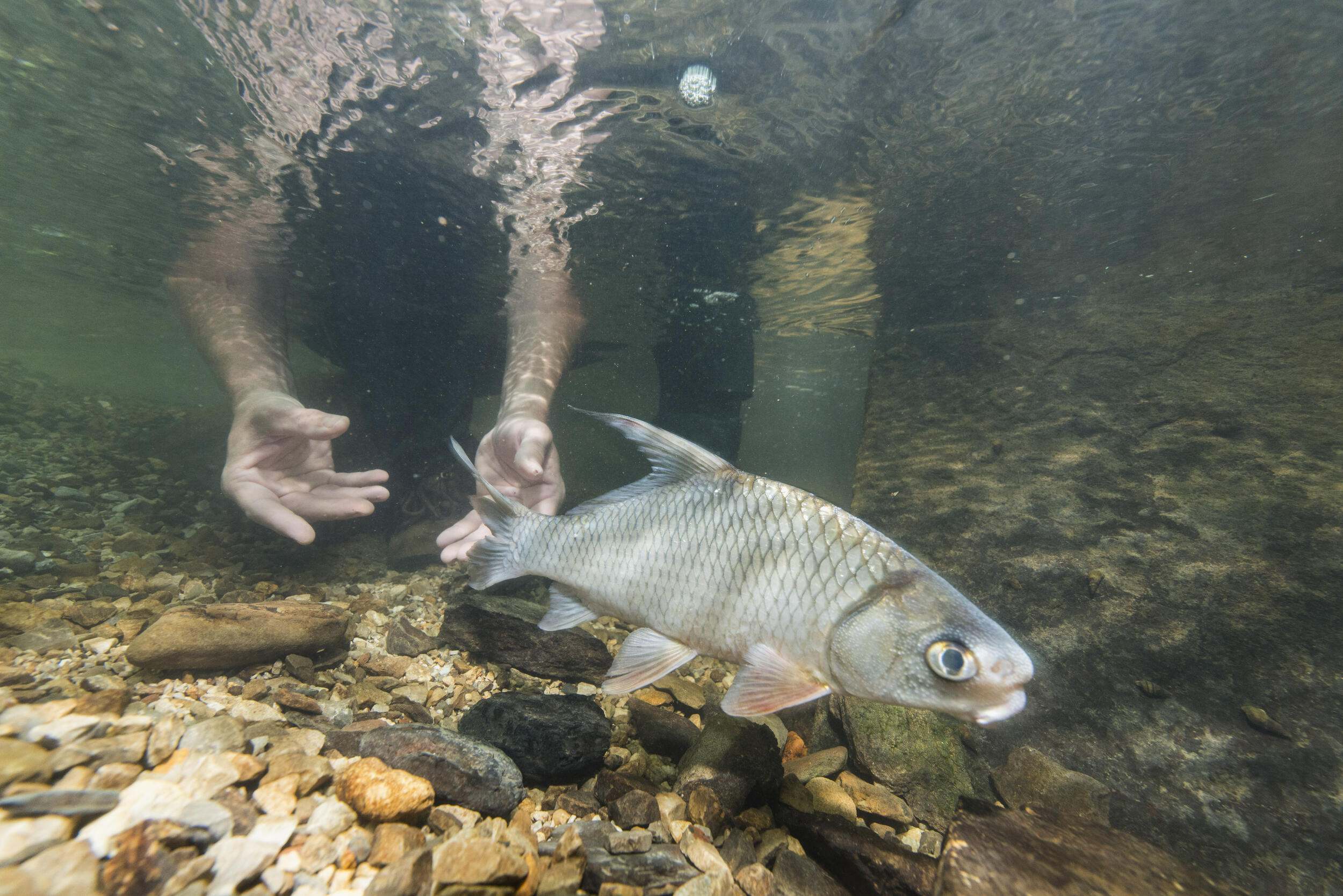Thanks for visiting our conservation newsroom. We hope you'll visit often to stay informed about conservation projects and big wins that we are reporting on from around Alabama.
Check out our most recent accomplishments from the Yellowhammer State.

April 13, 2025
Collaborating to Protect Alabama’s Aquatic Diversity
The Nature Conservancy’s three-person Freshwater Team arrives to work each day focused on finding ways to protect and restore our state’s unique aquatic species and habitats. Director of Freshwater Programs Jason Throneberry, Urban Watershed Specialist Ben Wegleitner and Freshwater Program Watershed Coordinator Alana Reynolds bring a wealth of experience and knowledge to the work, and depend heavily on collaboration and partnerships, both formal and informal.
When it comes to freshwater conservation, one of our most important partnership is with the Alabama Rivers and Streams Network (ARSN). In 2006, ARSN formed as a way of mobilizing nonprofits, private companies, government agencies and concerned citizens around identifying the highest quality and most biodiverse watersheds that exist in Alabama. With Alabama leading the nation in freshwater diversity, this is a tall order.
To date, the Network has identified 46 watersheds and 14 river and streams where focusing management, restoration, and recovery efforts would have the greatest impact on the state’s impressive, but vulnerable, populations of rare fishes, mussels, snails and crayfishes.
“These Strategic Habitat Units (SHUs) and Strategic River Reach Units (SRRUs) were selected based upon presence of federally listed and state imperiled species, and the habitats required by these species to survive,” says Alana Reynolds, TNC’s watershed coordinator in Alabama.
TNC has adopted a small subset of the SHUs on which to focus our restoration efforts, including the Paint Rock River, Locust Fork of the Black Warrior River, Big Canoe Creek, Terrapin Creek and the Cahaba River watersheds. The Alabama River is also a SRRU that is a priority to TNC.
Since 2016, ARSN members have continued to gather to investigate water quality, habitat conditions and species health at individual SHU’s and SRRUs around the state. TNC’s Freshwater Team participates in these gatherings at places where the ARSN priorities and TNC’s work intersect. Then, once a year, ARSN brings everyone together to share progress, report on potential threats and discuss opportunities in priority watersheds.
The ARSN meetings are important to TNC because ARSN helps guide TNC’s work in Alabama based on focal species presence, opportunity for restoration, partner momentum and leveraging available resources.
Reynolds adds, “This annual meeting, and the smaller gatherings throughout the year, are a great opportunity to connect in person about the work, and if needed, course correct so that Alabama can maintain it’s standing as the state with the highest aquatic biodiversity in the nation.”



